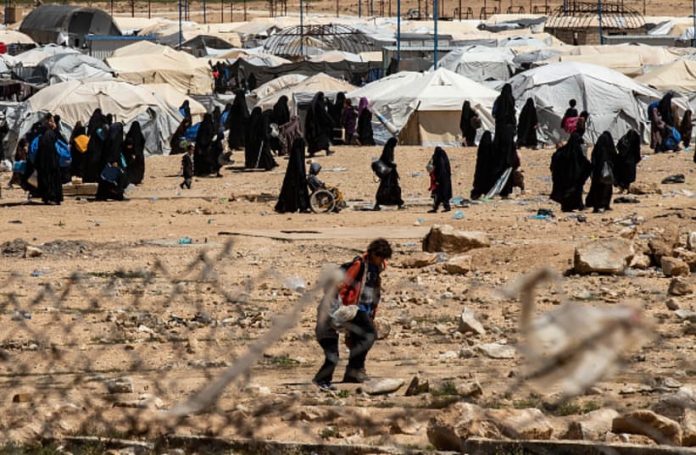Security forces recently arrested 16 suspected ISIS members during a targeted operation in one of Syria’s largest detainee camps. This development underscores the ongoing threat from ISIS remnants, even as the US prepares to scale down its military presence in the region.
These suspects were among those who surrendered to the Syrian Democratic Forces (SDF) in 2019. Since then, they have remained in detention across various facilities in eastern Syria. Despite the loss of its territory, ISIS still poses a serious risk.
ISIS cells persist in crowded camps
The US-backed SDF continues to secure several camps holding individuals with ISIS links. These include men, women, and children connected to the group. If the US withdraws and security weakens, the situation could quickly deteriorate.
Most detainees are held in al-Hol and Roj camps. Al-Hol alone accommodates around 40,000 people. Thousands of men suspected of ISIS involvement live there, along with families who travelled with them.
According to Kurdish media outlet Rudaw, Kurdish security forces detained 16 ISIS suspects during a weekend sweep in al-Hol. The operation also uncovered weapons, including rifles, pistols, and ammunition.
Currently, roughly 52,000 individuals remain in camps across eastern Syria. About 2,000 to 3,000 stay in Roj, while the rest are located in al-Hol or smaller facilities nearby.
Efforts to repatriate foreign detainees
Authorities in northeast Syria have urged countries to repatriate their citizens. So far, Iraqis form the largest group in the camps, with approximately 16,000 still present. Syrians make up around 15,000, and several hundred others hold citizenship in Western countries.
The Asayish, the SDF’s internal security force, confirmed the operation on 19 April. Working with the Women’s Protection Units (YPJ), they launched a joint effort to root out ISIS elements within the camp. The operation followed a recent increase in attacks against both civilians and camp personnel.
In total, 28 people were detained. Among them, 16 had verified ties to ISIS. The SDF stated that ISIS operatives have been trying to rebuild their network inside the camps.
Conditions continue to decline
Camp conditions have worsened due to shrinking international support. As funding drops, essential services become harder to maintain. In this environment, ISIS has increased its efforts to smuggle people out and radicalise vulnerable children.
Furthermore, humanitarian aid centres in the camps have faced several attacks. These incidents have disrupted relief work and limited the ability of organisations to assist those in need.
SDF and US coalition maintain pressure on ISIS
Despite planned troop reductions, the US and SDF continue their joint efforts to combat ISIS. The Combined Joint Task Force – Operation Inherent Resolve, active since 2015, supports anti-ISIS operations throughout Syria and Iraq.
On 16 April, the US Combined Special Operations Task Force praised the SDF for capturing four ISIS members. These arrests demonstrate that local forces remain capable and engaged.
Moreover, in March, the SDF rescued a Yazidi man who had been abducted by ISIS at the age of eight. He had been forced to fight and seriously injured, but ultimately survived. The SDF continues its efforts to locate and free other Yazidi captives still missing after the 2014 Sinjar massacre.
